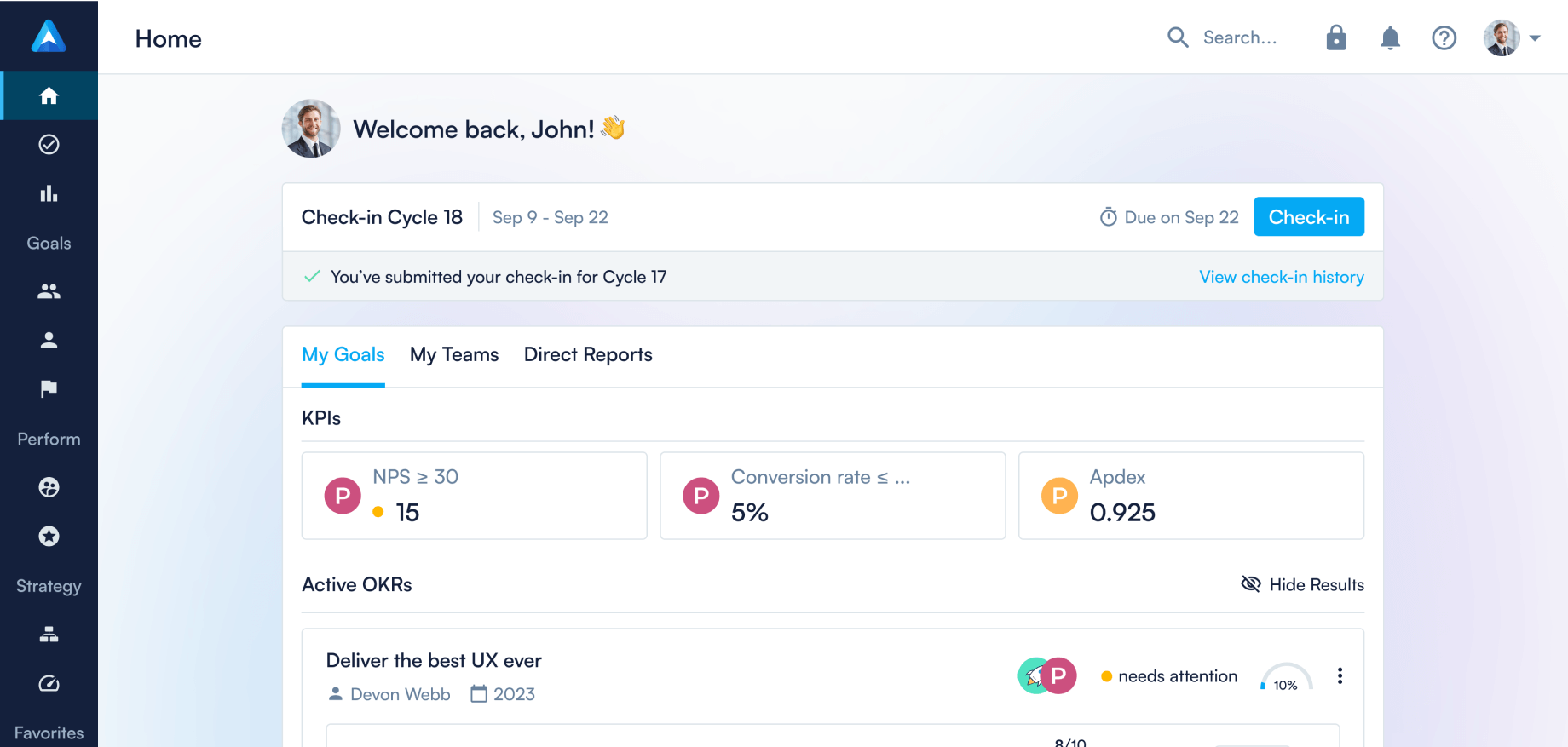
A free OKR template to help you track your goals

There are several ways to manage OKR: you can use an OKR spreadsheet, a dedicated software tool like Perdoo, or even pen and paper. We built a basic employee goal setting template to help you create your first OKRs. It’s free, simple to use, and great for small teams.

Setting up your OKR spreadsheet
For startups and small teams with less than 25 employees, an OKR spreadsheet in Microsoft Excel or Google Sheets is a simple way to make goals transparent and measurable. You can use our free template to get started with Objectives & Key Results right away. Simply download it from Google Drive or make a copy, and start adding your own goals. You'll find the link to the spreadsheet at the bottom of this article.
OKR spreadsheet for enterprises
In teams of 25+ employees, spreadsheets don't provide the level of transparency and usability a dedicated OKR tool like Perdoo offers. Updating a spreadsheet with OKRs from 150 employees can be a pain. However, it's an easy way to draft some good OKRs and get a first impression of what Objectives and Key Results could look like for your company. Our spreadsheet includes instructions on how to use the template, definitions of the most important terms, and additional resources to get started.
Spreadsheet vs OKR software
OKR spreadsheets are a good beginning but quite limited in features compared to a dedicated software tool. Perdoo follows a simple structure that works both for SMEs and large enterprises with thousands of employees. The OKR management platform guides users through the goal-setting process using in-app onboarding, tooltips, and a smart OKR wizard. This means: compared to a spreadsheet, Perdoo requires way less experience with the OKR framework to come up with good Objectives & Key Results and align them with the rest of the company.
Click the link below to get the OKR spreadsheet:
FAQ
Continue reading...


Why you shouldn’t outsource OKR to HR


How to embed goals in performance reviews






